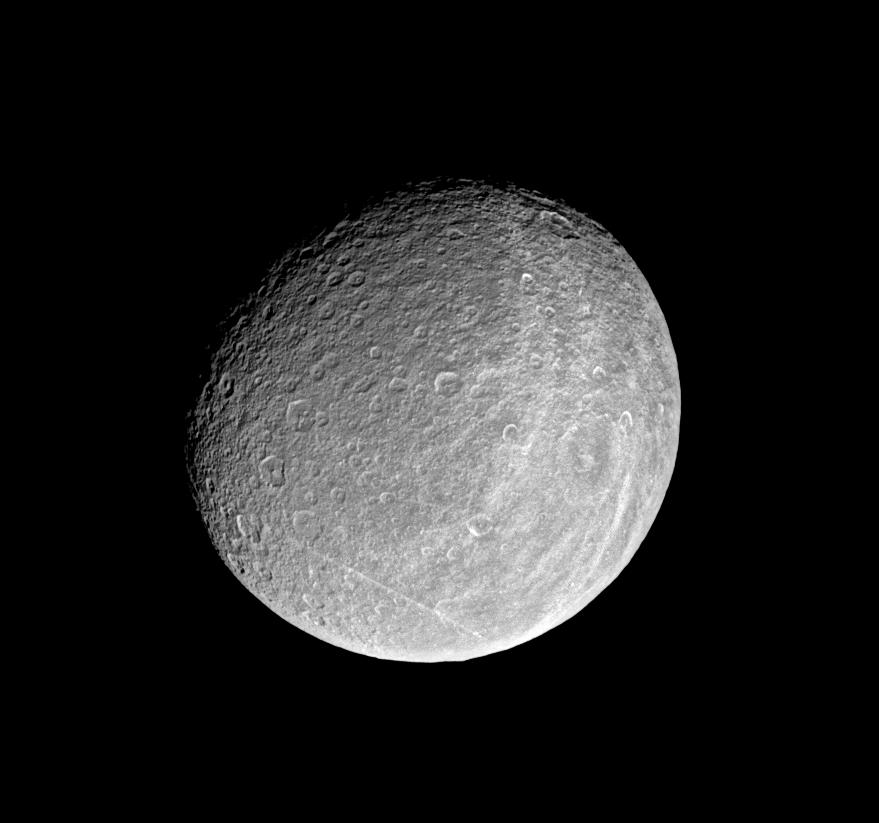Impact Central

| PIA Number | PIA06575 |
|---|---|
| Language |
|
This view of the trailing hemisphere of Saturn's moon Rhea
shows the region's bright wispy markings, but also shows off the moon's
craters in great detail. Of particular interest to imaging scientists is
the distribution and orientation of the many craters with polygonal
rims. These are craters with rough, angular shapes, rather than smooth,
circular ones. Rhea is 1,528 kilometers (949 miles) across.
This image
was taken in visible light with the Cassini spacecraft narrow angle
camera on Jan. 16, 2005, at a distance of approximately 500,000
kilometers (311,000 miles) from Rhea and at a Sun-Rhea-spacecraft, or
phase, angle of 35 degrees. (PIA06578 is a true color version of this
image.) Resolution in the original image was about 3 kilometers (2
miles) per pixel. The image has been rotated so that north on Rhea is
up. Contrast was enhanced and the image was magnified by a factor of two
to aid visibility.
The Cassini-Huygens mission is a cooperative project
of NASA, the European Space Agency and the Italian Space Agency. The
Jet Propulsion Laboratory, a division of the California Institute of
Technology in Pasadena, manages the mission for NASA's Science Mission
Directorate, Washington, D.C. The Cassini orbiter and its two onboard
cameras were designed, developed and assembled at JPL. The imaging team
is based at the Space Science Institute, Boulder, Colo.
For more
information about the Cassini-Huygens mission visit
http://saturn.jpl.nasa.gov . For images visit the Cassini imaging team
home page http://ciclops.org .
Credit: NASA/JPL/Space Science Institute
